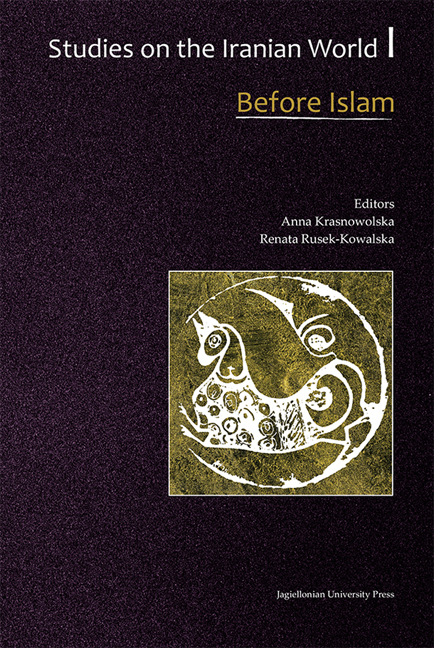New Sealings from Old Nisa
from Archaeology
Published online by Cambridge University Press: 12 January 2018
Summary
SUMMARY
During the last three archaeological excavations in Old Nisa, a new corpus of clay sealings came to light, so far amounting to 95 items. The sealings are in quite a bad state of preservation, as they are unbaked and fragmentary. However they offer a privileged glimpse on Parthian administrative practice and iconography, as another corpus was already found in the Square House sixty years ago. Differences among the two inventories regard the dimensions and the subjects of the impressions. On the contrary, some parallels may be found in the Shahr-i Qumis / Hekatompylos’ corpus of sealings, as regards both their morphological features and the subjects of the impressions. Though the largest part of the sealings are too damaged to be read, the impressions witness both local subjects – especially depictions of horses and inedited tamgas – and Greek ones – namely depictions of gods, humans and hippocamps.
The site of Old Nisa, lying 17 km from Ashgabat, was explored since the 30s of the past century by S.A. Marushchenko, then by the JuTAKE team (Complex Archaeological Expedition in Southern Turkmenistan) led by M.E. Masson. Afterwards, excavations were conducted since 1990 by the Italo- Turkmen expedition, sponsored by the ‘Centro Ricerche Archeologiche e Scavi di Torino’ in collaboration with the University of Torino. A large part of the Parthian citadel is now known; however, since 2007 our campaigns were devoted to an area that was unexplored so far.
In fact, in the SW corner of the hill, leaning against the fortified walls, a new building appeared, currently called the SW building, that led to interesting and challenging results. At present the excavations reached the size of a square of approximately 70 m each side, and work has still to be carried on in the northern and eastern areas, that are still unexplored. After five campaigns we are led to think that we are dealing with a compound rather than a single building, including residential, artisan, and warehouse rooms as well (Fig. 1). The main part of the building is developed around a big square court, separated from the external walls on the southern and western sides by a row of long rooms, while the eastern part of the building seems to have a more articulated plan and still deserves investigation.
- Type
- Chapter
- Information
- Studies on the Iranian World: Before IslamMedieval and Modern, pp. 279 - 290Publisher: Jagiellonian University PressPrint publication year: 2015



